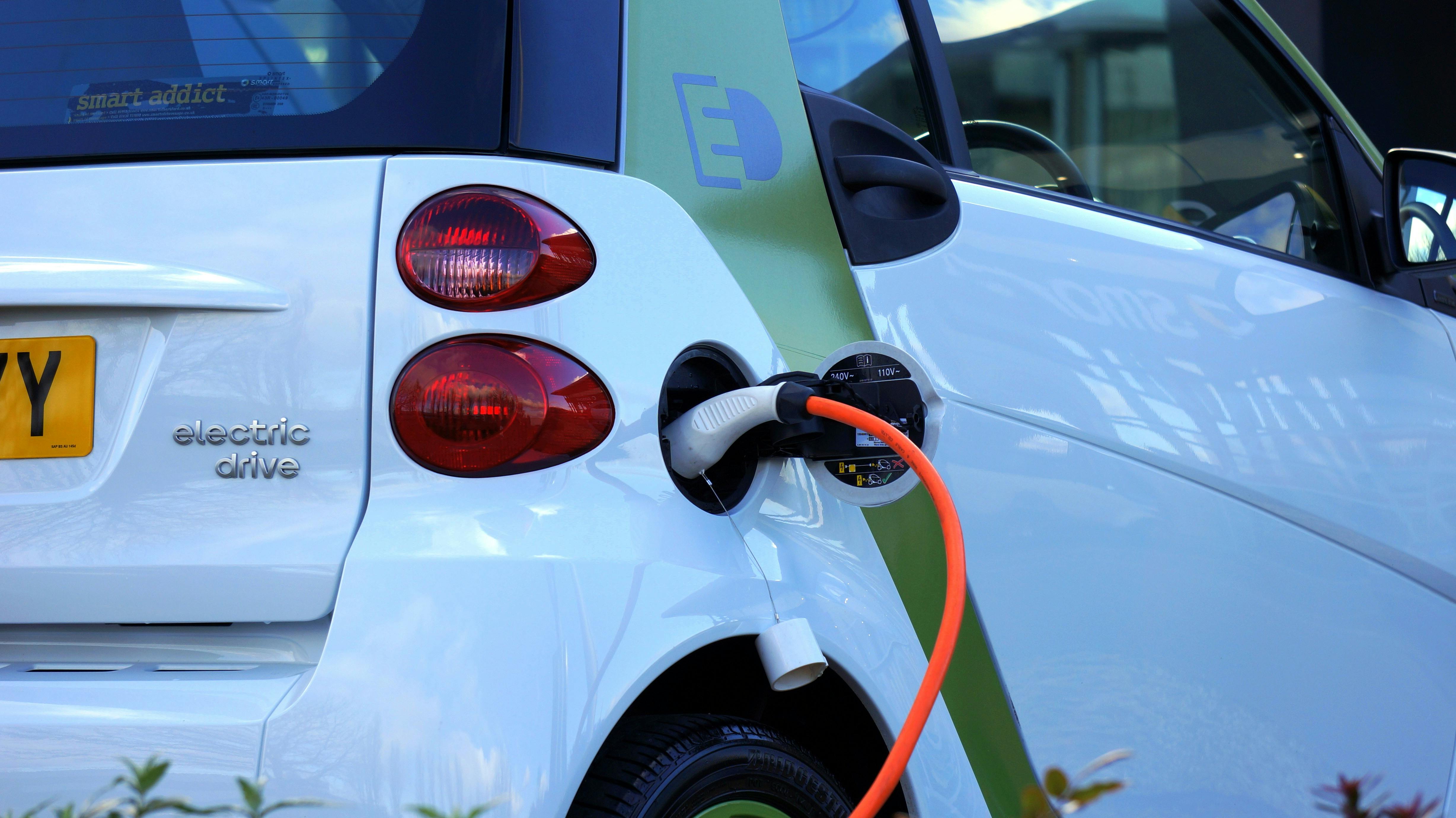Innovations in Renewable Energy: What Are the Latest Innovations in Green Energy Tech?
Renewable energy is transforming the way we generate and consume electricity. In recent years, various innovative technologies have emerged, revolutionizing the green energy sector. In this article, we will explore the latest advancements in renewable energy tech that are leading us towards a more sustainable future.
1. Solar Energy Innovations
1.1 Building-Integrated Photovoltaics (BIPV)
Building-Integrated Photovoltaics (BIPV) is an exciting innovation that seamlessly integrates solar panels into building materials such as windows, roofs, and facades. This technology allows buildings to generate their own electricity and reduces the reliance on traditional power sources.
1.2 Transparent Solar Panels
Transparent solar panels utilize a breakthrough technology that enables the conversion of sunlight into electricity without obstructing the view. These panels can be applied to windows, smartphone screens, and even car windshields, making them an ideal solution for energy harvesting in urban environments.
1.3 Perovskite Solar Cells
Perovskite solar cells are gaining attention for their high efficiency and low manufacturing costs. These cells use a hybrid organic-inorganic material that can be easily applied to various surfaces. With ongoing research and development, perovskite solar cells hold great potential to become a game-changer in the solar industry.
1.4 Solar Skin
Solar Skin is a revolutionary technology that enables solar panels to seamlessly blend with the aesthetics of a building. Designed to imitate different materials and patterns, Solar Skin allows for the integration of solar power into architectural designs without sacrificing visual appeal.
Solar energy innovations continue to push the boundaries of renewable energy technology. From BIPV to transparent solar panels and perovskite solar cells, these innovations are paving the way for a cleaner and more sustainable future.

This image is property of images.pexels.com.
As sustainability and environmental consciousness continue to shape the world’s energy landscape, researchers and engineers are constantly striving to develop innovative solutions to harness renewable energy sources. In this article, we will explore some of the latest advancements in green energy technology.
2. Wind Energy Innovations
2.1 Floating Wind Turbines
Floating wind turbines represent a significant breakthrough in wind energy technology. By deploying turbines in deep-water locations, where wind resources are more abundant and consistent, these innovations unlock vast offshore wind energy potential. Floating wind turbines also alleviate concerns regarding visual impact and their ability to harness stronger winds at higher altitudes is a remarkable development.
2.2 Bladeless Wind Turbines
Bladeless wind turbines are another exciting innovation in the renewable energy sector. Unlike traditional wind turbines with rotating blades, these turbine designs utilize oscillating or vibrating structures to convert wind energy into electricity. With reduced noise levels, lower maintenance costs, and improved bird safety, bladeless wind turbines hold promise for both residential and commercial applications.
2.3 Wind Energy Storage
One of the primary challenges associated with wind energy is the intermittent nature of wind patterns. However, recent innovations in wind energy storage technologies aim to overcome this limitation. By utilizing advanced battery systems and smart grid integration, excess wind energy can be efficiently stored during periods of low demand and discharged when needed, ensuring a consistent and reliable energy supply.
By embracing these exciting innovations in wind energy technology, we can maximize our utilization of this abundant renewable energy source while reducing our reliance on fossil fuels. These advancements not only contribute to a greener, more sustainable future but also offer economic opportunities and job creation in the renewable energy sector.

This image is property of images.pexels.com.
Renewable energy technologies and advancements continue to evolve, paving the way for a sustainable future. In this article, we will explore some of the latest innovations in green energy tech.
Hydropower Innovations
Low-Head Hydropower Systems
Low-Head Hydropower Systems are gaining attention due to their ability to generate electricity from low-flow, low-gradient water sources. By utilizing advanced turbine designs, these systems can efficiently harness the power of small streams and rivers, making hydropower more accessible in various geographical locations.
Tidal Energy
Tidal Energy is another exciting innovation in green energy tech. By harnessing the power of ocean tides, turbines are placed underwater to capture the kinetic energy of the moving water. This renewable resource has the advantage of predictable and consistent energy generation, as tides are influenced by the gravitational pull of the moon and sun.
Wave Energy Converters
Wave Energy Converters utilize the motion of ocean waves to generate electricity. These devices absorb the wave’s mechanical energy and convert it into electricity through various mechanisms such as linear generators or hydraulic systems. With ongoing advancements in wave energy converter designs, this technology has the potential to significantly contribute to our renewable energy mix.
These innovations in hydropower, tidal energy, and wave energy converters demonstrate the ongoing progress in green energy tech. By harnessing the power of water sources, we can continue to expand our renewable energy options, reduce reliance on fossil fuels, and build a greener and more sustainable future. Renewable energy technologies are constantly evolving, and in the world of green energy, innovations are happening at a rapid pace. In this article, we will explore some of the latest advancements in renewable energy technology.
Geothermal Energy Innovations
Advanced Geothermal Systems (AGS)
AGS are advanced geothermal energy technologies that harness heat from the earth’s core to generate electricity. Unlike traditional geothermal power plants, AGS can be built in areas with lower temperatures, expanding the potential for geothermal energy production. This technology utilizes innovative drilling techniques and advanced heat extraction systems to tap into the earth’s geothermal reservoirs more efficiently and cost-effectively.
Enhanced Geothermal Systems (EGS)
EGS is another groundbreaking innovation in geothermal energy. It involves creating engineered geothermal reservoirs in locations where suitable geothermal resources are not naturally available. By injecting water underground and creating fractures, EGS allows for the extraction of heat from deep within the earth. This technology is particularly advantageous as it opens up new possibilities for geothermal power generation across various regions.
These advancements in geothermal energy are revolutionizing the renewable energy sector by expanding its reach and increasing its efficiency. With AGS and EGS, we are tapping into the earth’s natural heat resources more effectively, powering a greener future for all.

This image is property of images.pexels.com.
Renewable energy is experiencing rapid advancements and breakthroughs, leading to the emergence of innovative technologies that are shaping the future of the green energy sector. In this article, we will explore some of the latest innovations in renewable energy and how they are revolutionizing the way we generate and use clean power.
Biomass Energy Innovations
Biomass Gasification
Biomass gasification is a cutting-edge technology that converts biomass, such as agricultural waste and wood chips, into a synthetic gas called syngas, which can then be used to produce electricity, heat, and even liquid fuels. This process provides a sustainable and carbon-neutral alternative to fossil fuels, reducing greenhouse gas emissions and promoting the utilization of organic waste materials.
Anaerobic Digestion
Anaerobic digestion is another exciting innovation in biomass energy. Through a natural decomposition process, organic waste, such as animal manure and food scraps, is broken down by bacteria to produce biogas. This versatile biogas can be utilized in multiple applications, including providing heat and electricity, as well as being purified to produce biomethane for use in transportation and heating.
Algae Biofuel
Algae biofuel is a promising renewable energy source that harnesses the power of photosynthesis. Algae species rich in oils can be grown in ponds or tanks on non-arable land and then processed to extract their high-energy content. This biofuel offers several advantages, including high productivity rates and the ability to absorb carbon dioxide during its growth, making it an environmentally friendly alternative to conventional transportation fuels.
By continually pushing boundaries and fostering innovation, these biomass energy technologies are helping pave the way towards a more sustainable and green-powered future. Through their use, we can reduce our reliance on fossil fuels and make substantial strides towards combatting climate change. Renewable energy technologies have been steadily advancing, paving the way for a greener and more sustainable future. One promising area of innovation lies in hydrogen fuel cell technology. These cells convert chemical energy into electrical energy, emitting only water vapor as a byproduct.
6. Hydrogen Fuel Cell Innovations
6.1 Solid Oxide Fuel Cells (SOFC)
SOFCs are known for their high efficiency and ability to operate at high temperatures. They are suitable for large-scale applications in industries such as power generation and transportation. Recent innovations in SOFCs include the use of advanced ceramic materials, enhancing their performance and durability.
6.2 Proton Exchange Membrane Fuel Cells (PEMFC)
PEMFCs offer advantages such as fast start-up, compact size, and high power density, making them ideal for automotive applications. Ongoing developments in PEMFC technology focus on improving their longevity, reducing costs, and increasing fuel utilization efficiency.
6.3 Direct Methanol Fuel Cells (DMFC)
DMFCs are highly versatile, as they can utilize a wide range of methanol concentrations. Ongoing advancements in DMFC technology aim to enhance their power output and address challenges associated with fuel crossover and methanol supply.
These innovations in hydrogen fuel cell technology hold great promise for a cleaner and more sustainable energy future. By continually pushing the boundaries of these technologies, we move ever closer to a world powered by environmentally friendly and renewable sources of energy.
7. Energy Storage Innovations
Energy storage plays a crucial role in the advancement of green energy tech, facilitating the integration of renewable sources into our energy systems. Several exciting innovations have emerged in this field in recent years, addressing the limitations of traditional energy storage solutions and paving the way for a more sustainable future.
7.1 Lithium-Ion Batteries
Lithium-ion batteries have revolutionized energy storage, powering everything from electric vehicles to smartphones. With continuous research and development, these batteries have become more efficient, affordable, and environmentally friendly. They offer high energy density and longer lifespans, making them ideal for storing renewable energy generated from solar panels and wind turbines. Innovations in lithium-ion technology have also focused on improving safety features, such as thermal stability and fire resistance, ensuring secure energy storage solutions.
7.2 Redox Flow Batteries
Redox flow batteries are another promising innovation in energy storage. They use liquid electrolytes to store and release energy, enabling scalable and flexible storage solutions. Redox flow batteries offer advantages like long cycle lives, rapid response times, and the ability to charge and discharge simultaneously. Their versatility makes them suitable for grid-level energy storage, enabling the integration of fluctuating renewable energy sources into the power grid.
7.3 Solid-State Batteries
Solid-state batteries are a breakthrough in energy storage technology, replacing liquid electrolytes with solid materials. These batteries offer high energy density, longer lifespans, and improved safety over traditional lithium-ion batteries. Solid-state batteries have the potential to revolutionize electric vehicles and renewable energy storage by providing higher capacity and faster charging capabilities. Additionally, their solid construction eliminates the risk of leakage or combustion, making them safer and more reliable.
With ongoing research and development, these energy storage innovations hold great promise for revolutionizing our energy systems, enabling greater adoption of renewable energy sources, and ultimately reducing our reliance on fossil fuels.
Grid Innovations
The world of green energy technology is constantly evolving, with new innovations and advancements emerging regularly. One area that has seen significant progress is grid innovations. These developments aim to improve the efficiency and effectiveness of energy distribution, ultimately benefiting both the environment and consumers like you.
Smart Grid
One of the latest grid innovations is the smart grid system. This technology utilizes digital communication and advanced sensing to gather real-time data on energy usage. With this information, the smart grid can optimize energy distribution, reduce power outages, and even allow for better integration of renewable energy sources such as solar and wind power. As a result, it has the potential to make our energy infrastructure more reliable, resilient, and sustainable.
Microgrids
Another exciting development in grid innovation is the concept of microgrids. These localized, self-contained energy systems have the ability to operate independently from the main grid. By incorporating renewable energy sources and energy storage technologies, microgrids can provide reliable power in remote areas, during emergencies, or even during peak demand periods. This level of flexibility and autonomy opens up new possibilities for energy sustainability and resilience.
Virtual Power Plants
Virtual power plants (VPPs) are yet another game-changer in the field of grid innovation. By connecting and coordinating multiple energy sources, including rooftop solar panels, battery storage systems, and electric vehicles, VPPs create a virtual network that operates like a traditional power plant. This enables the aggregation and optimization of distributed energy resources, reducing the strain on the grid and maximizing the use of renewable energy.
Grid innovations such as smart grids, microgrids, and virtual power plants are revolutionizing the way we generate, distribute, and consume energy. These advancements not only improve the efficiency and reliability of our energy infrastructure but also contribute to a cleaner and more sustainable future for all.
Energy Efficiency Innovations
Building Energy Management Systems (BEMS)
BEMS are cutting-edge technologies that optimize the energy usage of commercial buildings. By capturing real-time data on energy consumption and leveraging advanced analytics, BEMS help identify areas of improvement and enable efficient energy management. These systems ensure that heating, cooling, lighting, and other energy-consuming systems are utilized optimally, reducing waste and overall energy consumption. By integrating sensors, artificial intelligence, and automation, BEMS provide you with a comprehensive view of your building’s energy usage, allowing you to make informed decisions and drive impactful energy savings.
Smart HVAC Systems
Smart HVAC systems use advanced sensors and intelligent algorithms to regulate the heating, ventilation, and air conditioning of buildings. By dynamically adjusting the temperature and air quality based on occupancy, outdoor conditions, and other factors, these systems ensure comfortable and energy-efficient environments. Smart HVAC systems can learn and adapt to behavioral patterns, providing personalized and efficient climate control in different areas of your building. With their ability to optimize energy consumption and reduce carbon emissions, these systems are revolutionizing the way we manage indoor climate control.
Advanced Lighting Systems
Advanced lighting systems utilize innovative technologies such as LED lighting, smart controls, and daylight harvesting techniques. These systems enhance energy efficiency by automatically adjusting brightness levels, turning off lights in unoccupied areas, and utilizing natural daylight whenever possible. Additionally, advanced lighting systems enable customization of lighting scenarios to meet specific needs, resulting in reduced energy waste and enhanced user comfort. By incorporating motion sensors and advanced control interfaces, these systems offer a smart and sustainable solution for lighting across various applications, including offices, homes, and public spaces.
Innovations in green energy tech continue to revolutionize the renewable energy landscape. By adopting these energy efficiency innovations, you can optimize your building’s energy consumption and contribute to a greener and more sustainable future.
Emerging Technologies
Renewable energy is at the forefront of technological advancements aimed at reducing carbon emissions and combating climate change. In this article, we will explore three emerging technologies in the field of green energy tech that have the potential to revolutionize the way we harness and utilize renewable energy sources.
Solar-Powered Water Harvesting
Solar-powered water harvesting systems are a groundbreaking innovation that combines solar energy harnessing with water collection. Using photovoltaic panels, these systems generate electricity from sunlight, which is then used to power pumps and filtration systems that capture and purify water from various sources such as rivers, lakes, and even the air. This innovative technology not only provides clean and sustainable drinking water in remote areas but also addresses water scarcity issues by maximizing the efficiency of water collection.
Artificial Photosynthesis
Artificial photosynthesis aims to replicate the natural process of converting sunlight into chemical energy, similar to how plants produce oxygen. By using specialized catalysts and light-absorbing materials, researchers are developing technologies that can mimic the energy conversion process, potentially providing a clean and limitless source of fuel. This breakthrough innovation has the potential to revolutionize the energy landscape by offering a sustainable and carbon-neutral solution to traditional fossil fuels.
Thermophotovoltaics
Thermophotovoltaics (TPV) is an emerging technology that converts heat directly into electricity. By utilizing the thermal radiation emitted by hot objects, TPV systems can generate electricity without the need for moving parts or sunlight. This technology offers numerous advantages, including high efficiency, scalability, and versatility, making it a promising solution for various applications, such as waste heat recovery in industrial processes and power generation in remote areas.
These emerging technologies in renewable energy hold tremendous potential for transforming the way we produce and consume energy. With continuous research and development, these innovations can help us transition towards a more sustainable and cleaner future.
